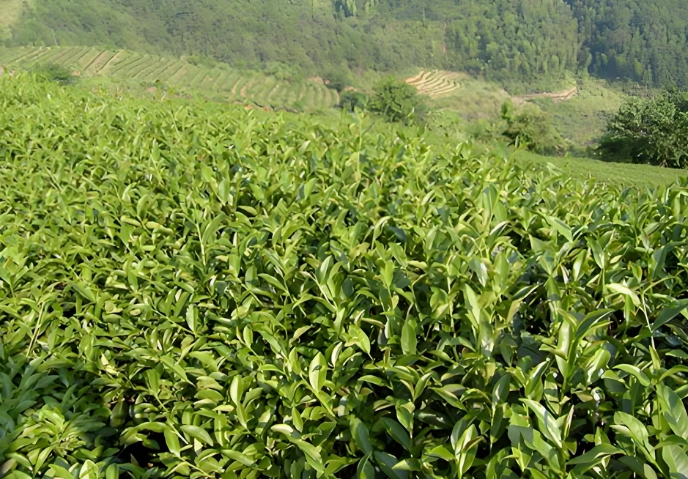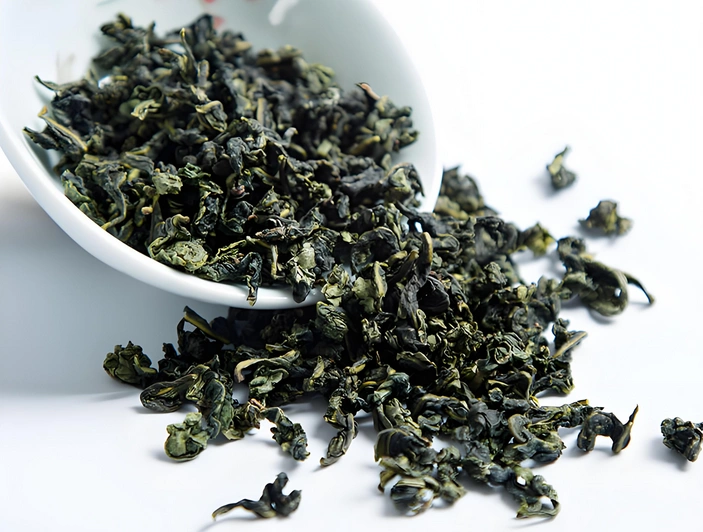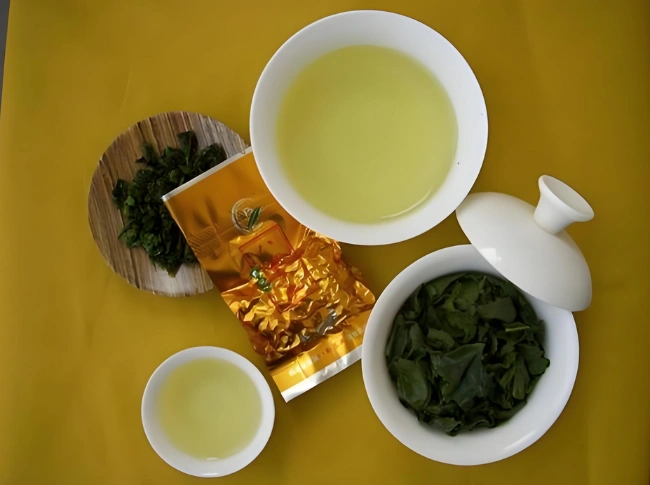Tieguanyin oolong tea enchants tea lovers with its intoxicating orchid aroma and silk-like texture, a sensory masterpiece that has reigned for centuries. Picture a warm, jade-green infusion in your cup—the fragrant steam curling upward with layers of floral sweetness, honeyed fruit, and a whisper of roasted chestnut. With your first velvety sip, tension melts away, your senses awaken, and your spirit lifts on a wave of pure delight.
In this article, we’ll journey through the storied origins and artisanal processing of Tieguanyin oolong tea, explore its health-boosting properties, compare it to other renowned oolongs like Wuyi rock oolong tea and Phoenix Dan Cong oolong tea, and share expert brewing tips so you can craft the perfect cup—every time.
Origins & Legacy of Tieguanyin
Nestled amid the emerald hills of Anxi County in China’s Fujian Province, legend says Tieguanyin (“Iron Goddess of Mercy”) first appeared in the 19th century when a humble farmer discovered a wild tea bush near a modest Guanyin temple. Under divine inspiration, he nurtured its saplings back to the temple, offering the first artisanal harvest as tribute. Today, that heritage lives on: generations of tea masters have refined this cultivar, honoring the goddess’s compassion through every leaf. When you sip Tieguanyin oolong tea, you partake in a living legacy—an exquisite union of nature, spirituality, and human craftsmanship.

Unique Processing: From Withering to “Guanxin” Rolling
Tieguanyin’s signature complexity stems from its meticulous multi-step processing:
- Withering: Fresh leaves are laid out on bamboo trays under shaded breezes, wilting gently to concentrate natural sugars and fragrant precursors.
- Bruising (Yaoqing): Leaves are lightly tossed in bamboo baskets, initiating partial oxidation and unlocking polyphenols that become theabrownins and thearubigins—molecules responsible for depth and color.
- “Guanxin” Rolling: Master artisans press and twist leaves in a handcrafted wooden drum, coaxing them into tight, bead-like spirals that unfurl gracefully in hot water.
- Fixation (Shaqing): A quick, high-heat pan-firing halts oxidation, preserving the tea’s floral top notes and tender mouthfeel.
- Drying & Roasting: Depending on desired roast level—ranging from Light Roast oolong tea to a more robust High Fire oolong tea—leaves receive brief firings that imbue layers of toast, caramel, or smoky nuance.
Each stage demands precision and intuition: a few extra minutes or a slight shift in temperature, and an entire harvest’s character transforms. The result is Tieguanyin oolong tea’s hallmark: an irresistible tapestry of fragrance, flavor, and depth.
Flavor Profile & Aromatic Nuances
One sip of premium Tieguanyin reveals:
- Top Notes: Heavenly orchid and fresh gardenia, evoking moonlit flower courtyards.
- Heart Notes: Subtle honeydew sweetness and ripe stone fruit, like apricot at dawn.
- Base Notes: Gentle roasted chestnut, biscuit crumb, or light toffee—especially in High Fire oolong variants.
- Finish: A cool, lingering mineral whisper that cleanses the palate, encouraging multiple infusions.
Whether you prefer the delicate floral elegance of Light Roast oolong tea or the deeper, warming roast of a Higher Fire batch, Tieguanyin invites you to explore its many layers—each cup a poetic dance of scent and taste.
Health Benefits of Tieguanyin Oolong Tea
Beyond its sensory allure, Tieguanyin oolong tea brims with wellness virtues:
- Antioxidant Power: Rich theaflavins and catechins scavenge free radicals, protecting cells from oxidative stress.
- Metabolic Support: Polyphenols gently stimulate metabolism—aligning with oolong tea in weight loss diet strategies to encourage fat oxidation.
- Digestive Harmony: Natural enzymes and moderate caffeine soothe digestion and reduce bloating, similar to oolong tea for digestion rituals.
- Heart Health: Regular sipping may aid cholesterol balance and support cardiovascular resilience.
- Mind-Body Balance: The calming amino acid L-theanine promotes relaxed alertness, a perfect complement to the tea’s mild energy lift.
When you make Tieguanyin oolong tea part of your daily routine, you nourish body and soul in tandem.

Comparing Tieguanyin to Wuyi Rock Oolong Tea
While Tieguanyin is celebrated for its floral grace, Wuyi rock oolong tea from Fujian’s cliff-side gardens offers a contrasting mineral complexity:
| Characteristic | Tieguanyin Oolong Tea | Wuyi Rock Oolong Tea |
|---|---|---|
| Floral Aroma | Intense orchid & gardenia | Subtle, mineral-driven notes |
| Flavor Profile | Honeyed fruit, light roast | Roasted nuts, dark stone |
| Mouthfeel | Silky, lustrous | Full-bodied, tactile |
| Terroir Influence | Humid, temple valley climate | Granite and river boulders |
Each style embodies its region’s spirit: Tieguanyin as the queenly flower-fairy, Wuyi rock as the stoic mountain guardian.
Spotlight on Phoenix Dan Cong Oolong Tea
Another distinct branch of oolong artistry, Phoenix Dan Cong oolong tea hails from Guangdong Province. Famous for its “single bush” complexity, Dan Cong teas channel bold aromatics—mango, cinnamon, rose, or honey—depending on the cultivar. While Dan Cong’s flamboyant profile differs from Tieguanyin’s refined bouquet, both share the same meticulous processing ethos and invite adventurous tasting sessions.
Roast Levels: Light Roast vs. High Fire Oolong
Roast degree profoundly shapes oolong character:
- Light Roast Oolong Tea: Preserves maximum floral and fruity notes, with a clean, refreshing finish. Ideal for appreciating Tieguanyin’s inherent orchid elegance.
- High Fire Oolong Tea: Extended roasts deepen sweetness and add toasty layers—think biscuits, caramelized sugar, or cocoa—creating a comforting, warming brew that pairs beautifully with cool-weather rituals.
Experiment with both to discover your preferred balance of brightness and depth.
How to Brew the Perfect Cup of Tieguanyin
To unlock every nuance of Tieguanyin oolong tea, follow these steps:
- Water Temperature: Heat water to 90–95 °C (194–203 °F).
- Leaf-to-Water Ratio: Use 5 g (2 tsp) per 150 ml water.
- Rinse & Awaken: Quick 5-second rinse to prime the leaves and remove residual dust.
- Steeping Times:
- First Infusion: 30 seconds for a bright, floral introduction
- Subsequent Infusions: +15–20 seconds per steep, up to 6–7 brews
- Vessel Choice: A gaiwan or small porcelain pot highlights aroma; a glass infuser reveals the leaves’ elegant unfurling.
- Mindful Sipping: Inhale deeply, close your eyes, and let each sip bloom—taste the journey from orchid petals to toasted chestnut.

🔗 To learn more about how to make tea, check out Tanbiwencha’s YouTube video explaining how to make tea.
Selecting Authentic Tieguanyin: What to Look For
True Tieguanyin oolong tea bears these hallmarks:
- Bead-like Leaves: Uniform, tightly rolled pearls that unfurl slowly.
- Fragrant Dry Leaf: Sweet floral aroma upon sniffing the dry leaves.
- Clear, Golden-Green Liquor: Reflecting purity and precise oxidation.
- Multiple Infusability: Rich flavor across at least six brews.
Avoid dusty fannings or generic “oolong blends”; seek single-origin Tieguanyin from reputable Fujian or Taiwan estates.
Incorporating Tieguanyin into Your Daily Tea Ritual
Elevate your routine with Tieguanyin oolong tea:
- Morning Clarity: A Light Roast infusion awakens your senses and eases you into the day.
- Midday Reprieve: A second brew offers calm focus—perfect for work or study.
- Evening Delight: A High Fire cup soothes the spirit, pairing beautifully with light desserts or quiet reflection.
Ritualize your tea time as a moment of self-care, letting floral fragrance transport you to tranquil temple gardens.
Common Mistakes and How to Avoid Them
- Boiling Water: Scalds leaves, destroying delicate aromatics—aim just under boiling.
- Oversteeping: Beyond 1 minute on the first infusion, bitterness can emerge—stick to precise timings.
- Low-Quality Leaves: Dusty or broken leaves lack depth—prioritize whole-leaf Tieguanyin.
- Ignoring Multiple Infusions: Don’t write off later brews; each unveiling reveals new layers.
By sidestepping these pitfalls, you honor the artistry behind every leaf.
Conclusion & First-Sip Recommendations
Tieguanyin oolong tea stands as a testament to human creativity and natural beauty—a floral crown jewel in the rich tapestry of tea culture. Begin your exploration with a Light Roast infusion to experience its pure orchid essence, then venture into High Fire depths to savor toasty sweetness. Along the way, compare its elegance to the mineral strength of Wuyi rock oolong tea or the bold aromatics of Phoenix Dan Cong oolong tea. With each mindful sip, you celebrate centuries of craftsmanship and awaken your senses to the sublime. Raise your cup to the Iron Goddess herself—cheers to floral grace and enduring delight!



